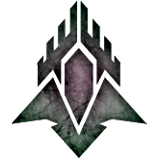Summoner Wars: A Meta-Gaming Experience
Part 2 of 3: The Master Set
Summoner Wars: A Meta Gaming Experience:
Part 2 of 3: The Master Set
Introduction
Last week we discussed the early meta-game of Summoner Wars, which revolved around the Big Three and their CUE's. We also touched on the Big Three's Anti-Thesis: The Cave Goblins. Today, I'd like to explore how that Anti-Thesis evolved and expanded with the release of the Master Set.
The Master Set:
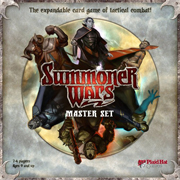
In 2011, Colby along with the rest of Plaid Hat Games decided to release a new set of Factions for Summoner Wars. They did this in a way that hadn't yet been done in the game. They released 6 different Factions in a single set, which was deemed the Master Set. The Master Set introduced The Deep Dwarves, The Benders, The Shadow Elves, The Sand Goblins, The Mountain Vargath, and The Swamp Orcs. This was a revolution to Summoner Wars, as it nearly doubled the Faction total from 8, to 14, two shy from current total. Like previous releases, each Faction had it's own unique play style, most of which began to tilt the game into a more Common-Friendly Meta-Game, something which was almost the complete opposite of the original Champ-Heavy Meta-Game which emerged due to the Big Three.
The Deep Dwarves:

The Deep Dwarves are easily the most Big Three oriented Master Set Faction, and they're masters at turtling, which with the emergence of the Master Set became a valid strategy. They had all of the ingredients that the Big Three had; a strong set of Anti-Common Champions, who were essential to have in battle, CUE's (Summoning Surge, which is the least damaging of all CUE's), and a reason to keep low unit counts.
First, let's look at their two powerhouse Champions, Kynder, a 6 Life, 2 Melee AV, for 5 Magic. Not an over the top stat line, but coupled with his ability MAGE PUSH, which can move any unit that is close to him into a better (for the Deep Dwarf player) position to get more dice on them. That power is extremely powerful, so it was priced at 1 magic per use. Next we have Lun, who is truly the Anti-Common unit of the Deep Dwarves. He has decent stats, with 4 Life, 3 Melee AV, for 4 Magic, but his ability GEM OF CALLING is once again where he get's his power. For 1 Magic, he can pull any Common Unit within 4 space of him right up to him, so he can immediately attack them, and with his 3 AV, he can take out most commons quite easily.
Next thing to look at is Tundle, he is an average Summoner, nothing special, save for his ability to create magic every turn in exchange for two of the Deep Dwarves' three attacks. So Tundle is where the Deep Dwarves really behave like The Big Three. Tundle allows for quick magic building to get his Champs out, and also pay for their abilities. He also encourages a low unit count so then he isn't wasting MEDITATE, or either of his CUE's.
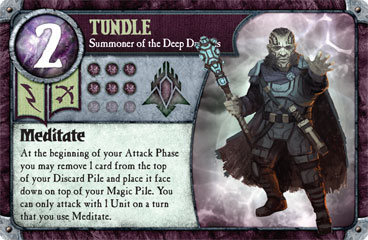
So all in all, the Deep Dwarves helped only a single change in the Meta-Game of Summoner Wars, which was helping turtling become a more effective strategy.
The Benders:

I would have to say that the Benders are the second Faction that behaves similarly to the Big Three. The Benders would truly fit right in with the Big Three save for their one difference, they have extremely frail Champs, their Champ with the highest life is tied between the twins Kalu and Talu, who when used in joint, effectively have only 3 Life each.
Their Events, on the other hand, are very “Big Three-ish” as Tacullu has both Magic Drain and A Hero Is Born in his set. They also have Mind Control, which may not initially be seen as a “Big Three-ish” event, though after a closer look it really is. It is a very dangerous Anti-Common tool. It can turn any Common Unit against it's original user. Tacullu also holds another dangerous tool, COUNTER SUMMON, which is not only dangerous to Champs, but really shows it's true power against Commons. It allowed the Benders to focus their energy on combating Champions with their attacks, while just merely Counter Summoning any low cost units within range, so long as Tacullu has the magic to do so. Which if played effectively, was never a problem.
The one major change that emerged with the Benders was that they had a Common Unit that could have a deck built around it effectively, and didn't need to use the big powerhouse champs. It was just as easy to summon some Controllers and save up your extra magic in order to COUNTER SUMMON a Champ if necessary, as it was to summon Champs, and have them Combat your enemy's Champs, and Counter Summon low cost units as needed. This gave a balance to their play style, and balance opens the door to new strategies in all games.
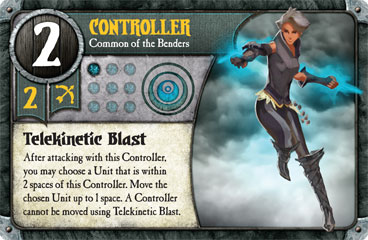
The Shadow Elves:

The Shadow Elves are a Faction which shows the balance between the Champion-Heavy Meta-Game of old, and the newer ideas of Common-Friendly Meta-Game. The Champ-Heavy play is shown very well though the inclusion of Hydrake (a beast Champ, akin to Gror, Fire Drake, Krung, and Miti Mumway), along with a brand new exclusive CUE, Into Darkness, which is practically a reverse of Reinforcements. Meanwhile, the Common-Friendly ideals are expressed through Shadows (which eliminated the downside to summoning fragile 1 Life Commons), Stalking Advance (which was more beneficial the more units you had on the field to move), and also Scouts (which also made it beneficial to have more units on the battlefield to make a push with.
I'd have to say that personally, I believe that the Shadow Elves represented the overall theme of the Master Set, which was balance. They allowed for aggressive assassination style game play, which countered the zoning and turtling strategies which had dominated the game thus far. This somewhat helped put those two strategies in check. The Shadow Elves also (as mentioned above) had a great balance with their Events and Units, which allowed for a new unique strategy, despite having a new type of CUE and also a beast Champ. This type of balance can be seen somewhat in throughout the other Master Set Factions, but none more so than the Shadow Elves.
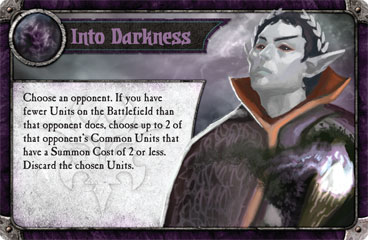
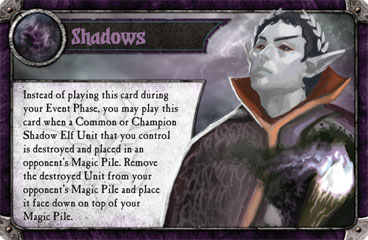
The Sand Goblins:

Next up we have the Sand Goblins! These crazy little bugger's strategy is a whole new beast in itself. It represented balance within a different aspect, where the Shadow Elves were balance between the old Meta and the emerging attempts at a new Meta, the Sand Goblins were built to be versatile and adaptable to any play style. While some of you may say that those two things are the same, there is one key difference between them, and that is how they were designed and how they operate. The Shadow Elves I feel are more of a 'pick a play style for the game and stick with it', while the Sand Goblins were more of a 'oh you summoned a champion, well now I'm switching tactics on you mid game'. That really is where the difference lies.
As for a true breakdown of the Sand Goblin's contribution to the meta-game is simple, they really didn't introduce anything universally applicable. They, like a few other factions, only benefit themselves in the game. It may be part of the whole versatility thing, but it is what it is. They have strong champs which have minor flaws that allow them to be summoned very inexpensively (you gotta love Biter!), and some Anti-Common based events. Krusk also has an insanely powerful ability in which an entire strategy can be built around if someone chose to do so.
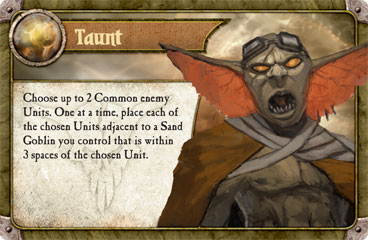
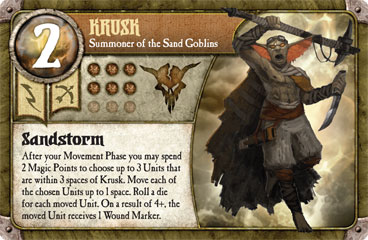
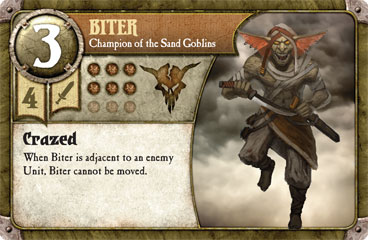
Oh and I may have misspoke when I said that they didn't contribute any meta-changing aspects to the game. They didn't have CUE's, which is always a push towards a more Common-Friendly game (even if it is countered by their other Anti-Common event, Taunt)!
The Mountain Vargath:

The Mountain Vargath are truly the Master Set's Anti Big Three Faction. They are show that a faction can be powerful without the dependance on Heavy Champs and CUE's. That's not to say that Mountain Vargath don't have Heavy Champs, but the thing is, they don't need them. When I play as the Vargath, I more often than not will only summon 1 Champ, occasionally I'll summon two of them, and very rarely I'll summon all three. The key components that allow the Vargath to be powerful without reliance on their Champs falls to their Summoner. Sunderved has a extremely powerful passive ability. It doubles the AV of all Vargath Commons you control within 2 spaces. That allows for a lot of COMMANDing. The power of COMMAND when used in conjunction with the Common's abilities is massive! Sunderved also has the Stat-line to be able to push heavily with his Commons, which is essential for his aggressive play style.
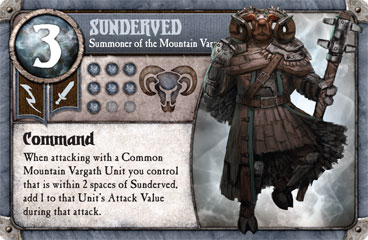
“So Meta-Game wise, what did the Mountain Vargath bring to the table?” you may ask. Well I personally would reply, “The Future”. They were so much the next page in the Anti-Thesis originally created by the Cave Goblins all those years ago. They had an event set which was functioned perfectly with Sunderved, and his Common-Heavy Playstyle, and they didn't need to rely on Champs like many of their predecessors.
I feel and have felt this way since the Master Set was released, that the inclusion of Superior Planning was the key to making the Vargath work. Superior Planning is far more powerful than any CUE in my opinion, and it doesn't have the repercussions that come with the CUE's. I don't know anyone who has ever changed all of their tactics because there was the possibility of a Superior Planning being played.
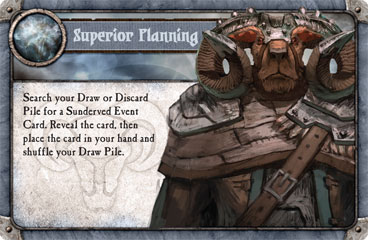
The Swamp Orcs:

Now, in case you haven't noticed already, I've been going through this list in order of how much each Faction helped change the game from a Champion-Heavy Meta to a Common-Friendly Meta (with the exception of the Sand Goblins, as they kind of have their own Meta-Game unto themselves). So lastly we have the Swamp Orcs, not because they massively changed the Meta to a more Common-Friendly game, but they are incredibly unique. They introduced two whole new components to the game. Swamp Walls and Survivalism.
First I'd like to discuss Survivalism. The Swamp Orcs truly play a Survival Of The Fittest type Game. This aspect is terrific for an Anti Big Three style of Meta, as it keeps unit counts low, thus making CUE's nearly worthless, when the Swamp Orcs are played correctly. The counter to this Survivalism is that the Swamp Orcs also somewhat force you to play a Survivalsm style of play due to Vine Walls, and also the event Ensnare (which is similar to the Sand Goblin's Taunt).
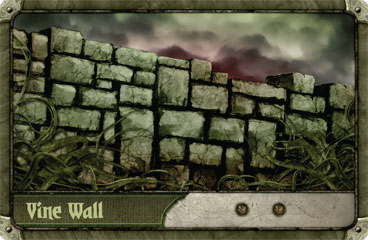
Second, Vine Walls were a revolution to Summoner Wars, they did something that was never done before, which is always a Meta-Game changer. They made it incredibly difficult to position correctly on the battlefield, which is essential in any war game. They also had an Anti-Common aspect to them as well. They damaged units that got stuck on them. This heavily damaged the playing of low life Commons, which many factions do.
So all in all, the Swamp Orcs are very unique, and they changed the game entirely, with out really affecting the Meta-Game all too much. Very similar to how the Sand Goblins were not very Meta-Game changing.
Effects on Earlier Factions
The Master Set nearly doubled the amount of Factions in Summoner Wars, and this alone completely changed the Meta due to the amount of new match ups there were. Each Faction was developing a way to deal with CUE's and their use was becoming less and less common in newer releases, thus the Common-Friendly game was becoming more prominent. The Big Three were seeing a small decline due to this. The new factions had Champs and Commons who were both powerful, and capable of dealing with the CUE/Champ-Heavy strategies that had been so dominant in earlier years.

The Cave Goblins truly began to flourish with the release of the Master Set, as their rushing horde style of play was more effective due to the lower amount of CUE's and Beast Champs being played. The shift from Summoning 3 Champs and 2-4 Commons per game to Summoning 1-2 Champs and 8+ Commons per game had officially begun, and it would continue with the future releases as well.
Master Set's Conclusion:
The Master Set had done entirely what I believe it was meant to do. Begin to balance the game more, and lessen the hierarchy set in stone by the Big Three two years earlier. So now that this chapter of the Meta-Gaming Article has come to a close, you may ask what is next. Well I feel that the next major change to the Meta-Game came from some new Summoners released for the original four Factions. The Second Summoners: Malardia, Bolvi, Torgan, and Frick. So next week we'll look at how they changed the game even more, and helped set a new pace to the deckbuilding aspect of the game. So tune in next week for Summoner Wars: A Meta Gaming Experience: Part 3 of 3: The Second Summoners!


